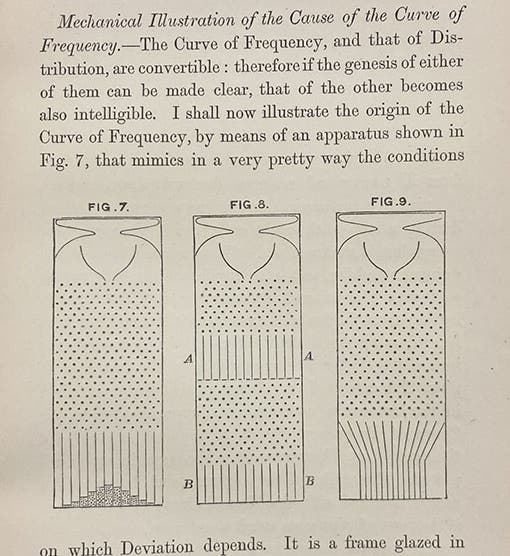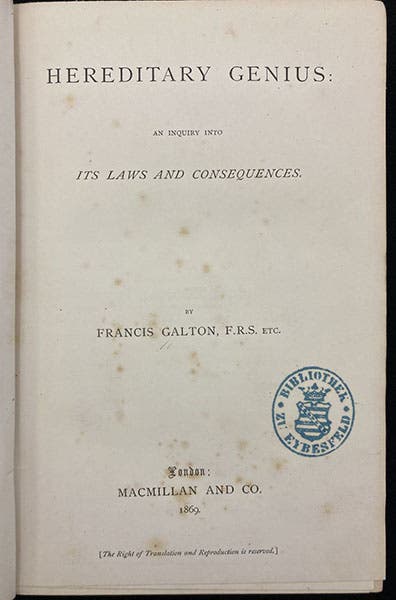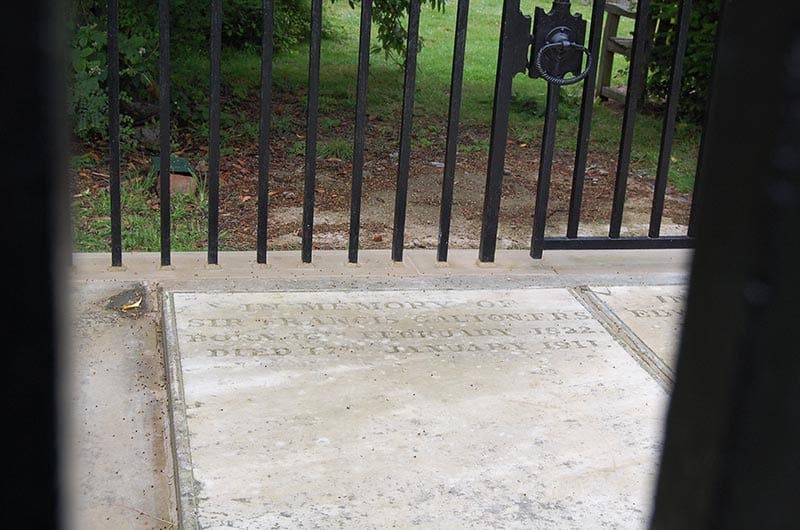Scientist of the Day - Francis Galton
Francis Galton, an English social scientist, was born Feb. 16, 1822, in Birmingham. Galton was the "half-cousin" of Charles Darwin, which means they shared a single grandparent, which in this case was the idiosyncratic physician and poet, Erasmus Darwin, who no doubt bequeathed interesting genes to both of his eminent grandsons. It is common to speak of Galton as a "polymath," but he did not really have the intellectual range of the more typical polymaths, such as Alexander von Humboldt, Gottfried Wilhelm Leibniz, or Thomas Young. Nevertheless, he did make contributions to a wide variety of fields, as we shall see.
Galton is best known for his investigations into the inheritance of certain traits, especially genius, in the human population. He was much influenced by Darwin's Origin of Species (1859), especially the early chapters on artificial selection, which prompted him to look at the hereditary nature of genius, which gave him the title for his first major book, Hereditary Genius (1869). We have a copy in our collections. By polling the members of the Royal Society, Galton established that genius is passed down like any other set of traits, and that, if we wished to, we could engineer smarter and smarter human beings. Galton's plan for improving the human race came to be called eugenics – he even coined the name – and for fifty years or so it was a fairly benign idea. Unfortunately, in the 1930s, eugenics was used to justify compulsory sterilization programs in the United States, and in Germany, it led to mass extermination of humans judged less fit to breed. Those appalling abuses have given eugenics a very bad name, and Galton’s reputation and stature has suffered as well, although his observations and statistical conclusions in Hereditary Genius were basically sound and accurate, and I am not sure he should be blamed him for the misuse of his conclusions, just as Darwin should not be held accountable for the misguided doctrine of the 1890s known as Social Darwinism, which owed little to Darwin.
One of the problems Galton investigated was the relative importance of heredity and environment in determining the characteristics of an individual. He coined the phrase “Nature vs. nurture,” that we still use in discussing the matter. We show a page in his book, English Men of Science (1875), where the dichotomy is introduced (fourth image).
Galton clearly had an inventive mind, and he managed to see nearly everything he looked at in a new light. When investigating human genius, he essentially invented the questionnaire, as a way of gathering information. He developed all sorts of statistical techniques for analyzing his data, many of them brand new. He did not invent the bell curve or Gaussian distribution, but he was the first to show that a wide variety of data cluster around the mean in just that way. He even invented a device, now called a Galton board, which visually demonstrates how random variables produce a bell curve centered on the mean. It consists of spaced pegs, upon which balls fall, and bounce right or left at random. The resulting pattern at the bottom is inevitably the familiar bell-shaped curve for normal distribution. He showed a diagram of such a board in a later work that we happen to have, Natural Inheritance (1889; first image). I looked around for a historic Galton board in the usual museums, one perhaps that Galton built or used, but did not find any, so we show you one that at least looks semi-old (sixth image). Even better, here is a short video that shows a modern Galton board in action. It provides a convincing argument for the value of statistical analysis of random events.
Galton also made important contributions to meteorology, essentially pioneering the daily weather map. And while he did not invent the idea that criminals might be identified by their fingerprints, he was the first to statistically study fingerprints and come up with a method for classifying them by their varying arches, whorls, and loops. He published three books on fingerprints, but we have none of those in our library.
Galton died on Jan. 7, 1911, at the age of 88, and was buried in St. Michael and All Angels Churchyard, in the village of Claverdon, Warwickshire. There is a very simple stone on his grave (seventh image). For a portrait, I like a carte-de-visite-syle photo that is in the National Portrait Gallery, where you can also many later portraits., including an oil painting or two (second image).
William B. Ashworth, Jr., Consultant for the History of Science, Linda Hall Library and Associate Professor emeritus, Department of History, University of Missouri-Kansas City. Comments or corrections are welcome; please direct to ashworthw@umkc.edu.













